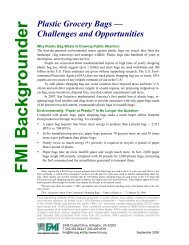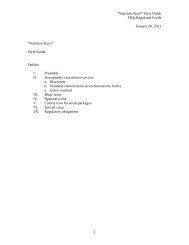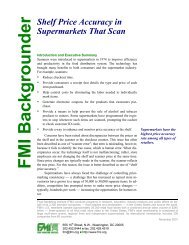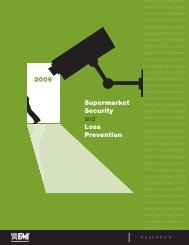Consumer Shopping Habits for Wellness and Environmentally ...
Consumer Shopping Habits for Wellness and Environmentally ...
Consumer Shopping Habits for Wellness and Environmentally ...
Create successful ePaper yourself
Turn your PDF publications into a flip-book with our unique Google optimized e-Paper software.
striking as the overall similarity across groups. Comparing the mean (total, at top) to the rest of the<br />
―cuts‖ in the data, there are no big differences.<br />
Figure 18 – Proportion of H+W <strong>Consumer</strong>s by Other Demographics<br />
0% 20% 40% 60% 80% 100%<br />
Total<br />
Gender<br />
Male<br />
Female<br />
Age<br />
25 - 34<br />
35 - 44<br />
45 - 54<br />
55 - 64<br />
65 - 70<br />
Ethnicity<br />
Caucasian<br />
African American<br />
Latino<br />
Education<br />
Less than high school<br />
High school graduate<br />
Some College<br />
College graduate<br />
Graduate school<br />
Income<br />
Under $20,000<br />
$20,000 - $29,999<br />
$30,000 - $39,000<br />
$40,000 - $49,999<br />
$50,000 - $59,999<br />
$60,000 - $99,999<br />
$100,000 - $149,999<br />
$150,000 or more<br />
Periphery Mid-level Core<br />
Base: Primary household shoppers (n=2176; 166 Core, 1408 Mid-level, 602 Periphery). | Source: GMDC 2009 Survey, Mar. 2009.<br />
The only demographic difference that ―jumps out‖ here is the difference in race/ethnicity as regards<br />
H+W orientation (approximately the middle of the chart, below). The ―Caucasian‖ group shows<br />
substantially less Core (<strong>and</strong> more Periphery) involvement than either African Americans or Latinos.<br />
34

















